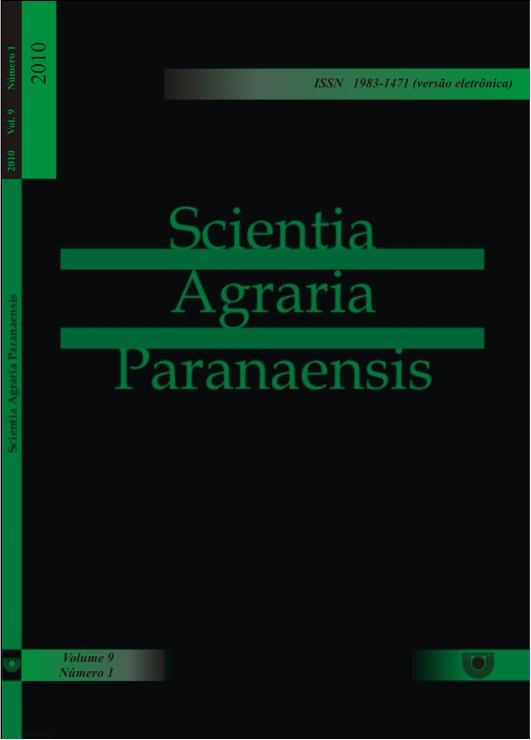Indicadores de sustentabilidade para avaliação de agroecossistemas extrativistas: o caso da Aroeira (Schinus terebinthifolius Raddi) no Baixo São Francisco, Brasil
DOI:
https://doi.org/10.18188/sap.v9i1.4306Palavras-chave:
Sociedades sustentáveis, políticas públicas ambientais, extrativismo, bacia hidrográficaResumo
É grande a necessidade de definição e utilização de ferramentas mensuráveis que auxiliem o planejamento, gestão e avaliação de políticas de sustentabilidade. O Capítulo 40 da Agenda 21 ressalta a carência dos países, das organizações internacionais, e das organizações não governamentais em elaborar indicadores de desenvolvimento sustentável. Este trabalho objetivou identificar, descrever e classificar os principais modelos de indicadores e definir o mais adequado para mensurar a sustentabilidade de agroecossistemas extrativistas. Para tanto, utilizou-se o caso da coleta do fruto da aroeira (Schinus terebenthifolius Raddi) na sub-bacia hidrográfica do Baixo São Francisco, localizada no nordeste brasileiro. A sub-bacia e a zona costeira adjacente foram as áreas geográficas utilizadas nesta pesquisa. A coleta de dados foi realizada em duas etapas: a primeira bibliográfica e documental, com base em publicações tradicionais, e a segunda de campo, através de visita de observação direta e entrevista dirigida. A partir da identificação e de descrições realizadas na literatura, foi
possível identificar e classificar os modelos de indicadores que efetivamente são utilizados em todo mundo, e com isso definir o mais adequado para mensuração dos indicadores no objeto da pesquisa. Com base neste estudo concluiu-se que os modelos de indicadores de sustentabilidade podem ser classificados quanto à geração, abrangência, e enfoque. O modelo PEIR desenvolvido pelo CIAT, Banco Mundial e PNUMA se mostrou o mais adequado para a avaliação de sustentabilidade de agroecossistemas extrativistas.
Downloads
Publicado
01-01-2000
Como Citar
SILVA, C. E.; HOLANDA, F. S. R. Indicadores de sustentabilidade para avaliação de agroecossistemas extrativistas: o caso da Aroeira (Schinus terebinthifolius Raddi) no Baixo São Francisco, Brasil. Scientia Agraria Paranaensis, [S. l.], v. 9, n. 1, p. p. 15–36, 2000. DOI: 10.18188/sap.v9i1.4306. Disponível em: https://e-revista.unioeste.br/index.php/scientiaagraria/article/view/4306. Acesso em: 6 dez. 2025.
Edição
Seção
Artigos Científicos
Licença
Aviso de Direito Autoral Creative Commons
Política para Periódicos de Acesso Livre
Autores que publicam nesta revista concordam com os seguintes termos:
1. Autores mantém os direitos autorais e concedem à revista o direito de primeira publicação, com o trabalho simultaneamente licenciado sob a Licença Creative Commons Attribution que permite o compartilhamento do trabalho com reconhecimento da autoria e publicação inicial nesta revista.2. Autores têm autorização para assumir contratos adicionais separadamente, para distribuição não-exclusiva da versão do trabalho publicada nesta revista (ex.: publicar em repositório institucional ou como capítulo de livro), com reconhecimento de autoria e publicação inicial nesta revista.
3. Autores têm permissão e são estimulados a publicar e distribuir seu trabalho online (ex.: em repositórios institucionais ou na sua página pessoal) a qualquer ponto antes ou durante o processo editorial, já que isso pode gerar alterações produtivas, bem como aumentar o impacto e a citação do trabalho publicado (Veja O Efeito do Acesso Livre).
Licença Creative Commons
Esta obra está licenciada com uma Licença Creative Commons Atribuição-NãoComercial-CompartilhaIgual 4.0 Internacional, o que permite compartilhar, copiar, distribuir, exibir, reproduzir, a totalidade ou partes desde que não tenha objetivo comercial e sejam citados os autores e a fonte.


